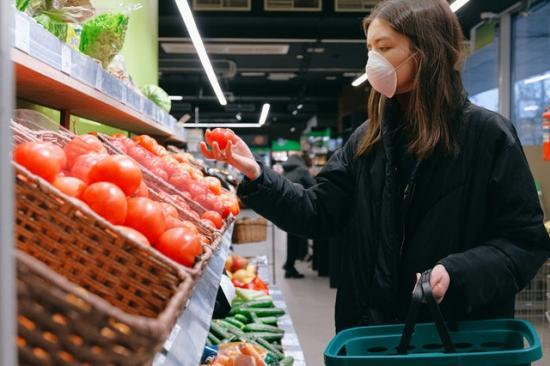Crops from U.S. food supply chains will never look nor taste the same again
Some paradigm shifts happen with the slow accumulation of evidence that challenges business-as-usual, and sets society on another trajectory. Other shifts come in the aftermath of catastrophes that cause severe human suffering, painfully demonstrating how badly our society has ignored or dismissed danger signs that our essential human life support systems have not been functioning well.
I feel deep grief as we recognize how our health care and food supply chains are failing so many of our elderly, infants, minorities and essential service workers during this pandemic. Many agro-ecologists and epidemiologists have tried to alert our society to the parallel flaws in our “siloed” health care and our food supply chains. I hesitate to call them heath care systems and food systems, because they were never systematically designed. Now we can see how the unsystematic and ad hoc build-out of both of these supply chains have left billions of the planet’s citizens tragically vulnerable:
- Over-reliance on international sourcing of items essential to our health and survival that are difficult to equitably and efficiently distribute whenever a global catastrophe occurs.
-
Poor “contact tracking” and traceability of threats to consumers, as our foods and medicines (and associated contaminants) move across long supply chains that make hotspots of contamination hard to identify.
-
Compromised immune systems of poultry, livestock, wildlife and the humans laboring with them, so that all are more vulnerable to novel viruses or bacteria.
-
Depletion and fragmentation of formerly diverse “biofilters” (such as hedgerows, perennial pastures and wetlands) in working landscapes that once slowed down the movements of zoonotic pathogens and weeds.
-
Few planning efforts that look out more than two decades at emerging threats.
With regard to food supply chains, I believe that the COVID-19 pandemic will rapidly lead us to co-design—perhaps for the first time in human history—cohesive food systems that may simultaneously achieve three goals: diversified working landscapes; enhanced human health, and less disparity in economic well-being among food producers and consumers. In my mind, achieving all three of these goals would reduce our vulnerability to pandemics.
How? With greater soil microbial diversity and perennial polycultures of nutritional—dense food crops, the agricultural landscapes that comprise 40% of the land surface of this planet could slow, if not eliminate the dispersal of novel viruses and bacteria. Farmworkers and farmers themselves will be inoculated with a diversity of soil microbes that help them develop antibodies and other means of resistance to the spread of these pathogens.
Secondly, consumers who eat nutrient-dense, traceable foods supplied by local farmers and ranchers are more likely to develop immune systems (and food purchasing patterns?) that will make them less vulnerable to pandemics. We will also see more of them take up gardening to ensure that their children know what diverse, seasonally fresh foods grown on fertile soil look and taste like.
Finally, prosperous rural and urban communities can provide for better health care facilities, cleaner and safer food handling and processing facilities, and more options for green livelihoods, reducing the disparity in access to resources among all of their residents.
That said, the food we eat will neither look nor taste the same as what we are eating today.
Click here to continue reading
Nabhan, G.P. Crops from U.S. food supply chains will never look nor taste the same again. Agric Hum Values (2020). https://doi.org/10.1007/s10460-020-10109-6





















